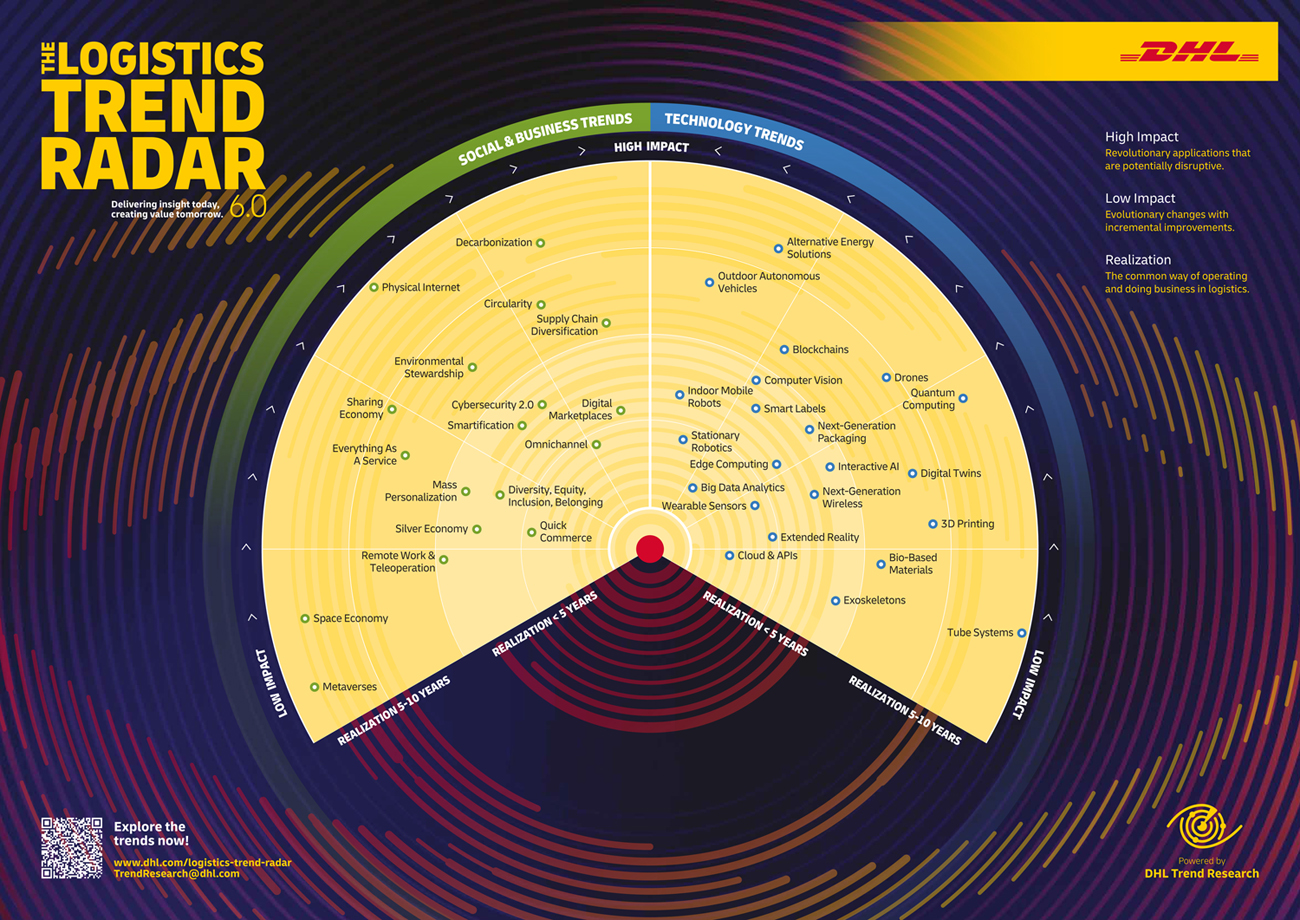DHL has released its latest Logistics Trend Radar, which identifies ongoing developments in the logistics industry and where they’re likely to be headed in the years to come.
DHL releases its trend report every couple of years. In 2018, it identified e-commerce, automation and sustainability as the most relevant areas for innovation. In 2020, it focused on the impact of 5G technology and the “internet of things” on improving visibility in the supply chain.
These trends continue to be of great relevance in 2022, with decarbonisation, circularity (recycling and reusing materials), and alternative energy solutions particularly high on the list, as companies continue to reorient themselves towards net zero emissions. The report notes that of the $755 billion invested in energy transition in 2021, 36% was invested in electric transport.
Meanwhile, developments in automation have mainly focused on indoor robots, both moving and stationary, helping to improve the efficiency of processing in warehouses and hubs. But attention on outdoor autonomous vehicles is also growing.

Click to embiggen. Credit: DHL
There’s also a notable addition, post-COVID: supply chain diversification. It became apparent during the pandemic that disruption to airlines and shipping could cause huge amounts of strain on long-distance supply chain routes, and many businesses found themselves short on contingencies due to a lack of alternative routes.
Logistics companies have turned to big data and AI to allow them to become more agile and responsive and to plug gaps in the supply chain, continuing the earlier trend of greater transparency and interconnectivity through the “internet of things”. But diversifying suppliers and regionalising operations have also become important, to help relieve the strain caused by pandemics, climate-related disasters and geopolitical crises such as the war in Ukraine.
“Multisourcing, the partnering with multiple competing suppliers, and multishoring, the selecting providers in more or different countries or regions, are some of the strategies that organizations can take,” DHL said. “Broadening the supplier ecosystem and expanding manufacturing and distribution networks can achieve increasing resilience, agility, responsiveness, and competitiveness.”
Digital marketplaces and omnichannel logistics (the integration of physical and online shopping) continue to be “high impact” trends, as do blockchains and edge computing, which entails processing data closer to its origin in the real world (“decentralising” it) in order to reduce the strain of transferring large amounts of data on the global network.
Take a look at the infographic above to see what else might be in store in the next 5-10 years.
Source: DHL



On social media? Why not give us a follow...